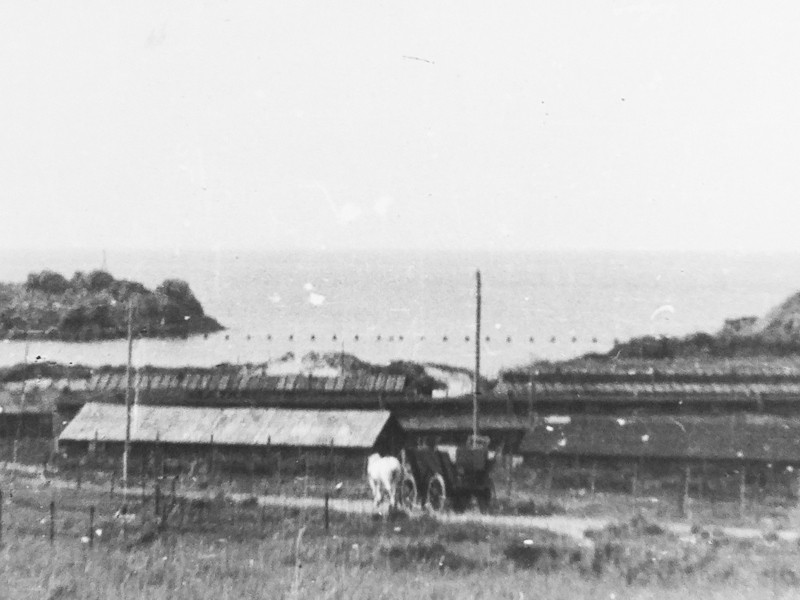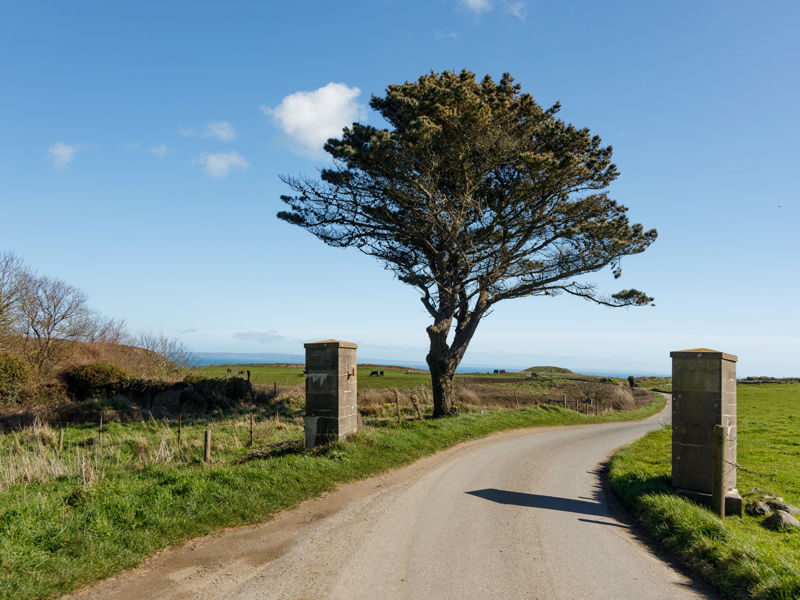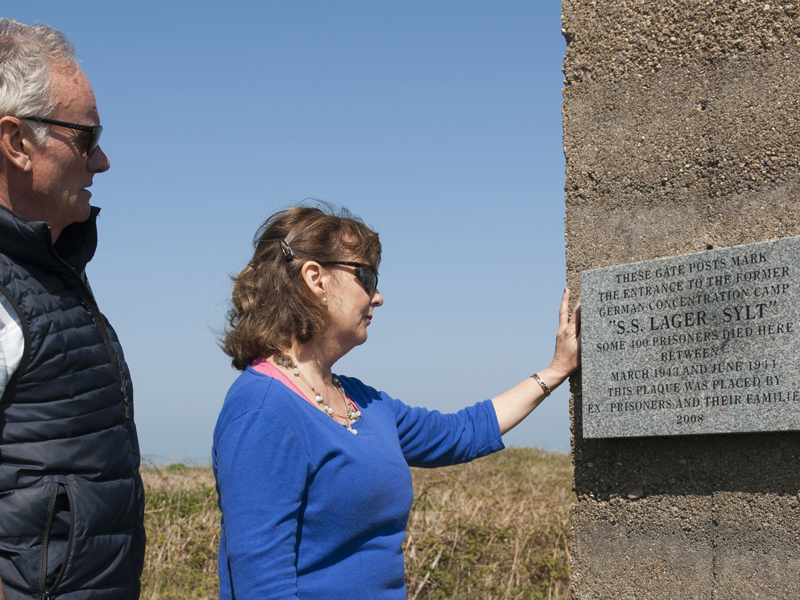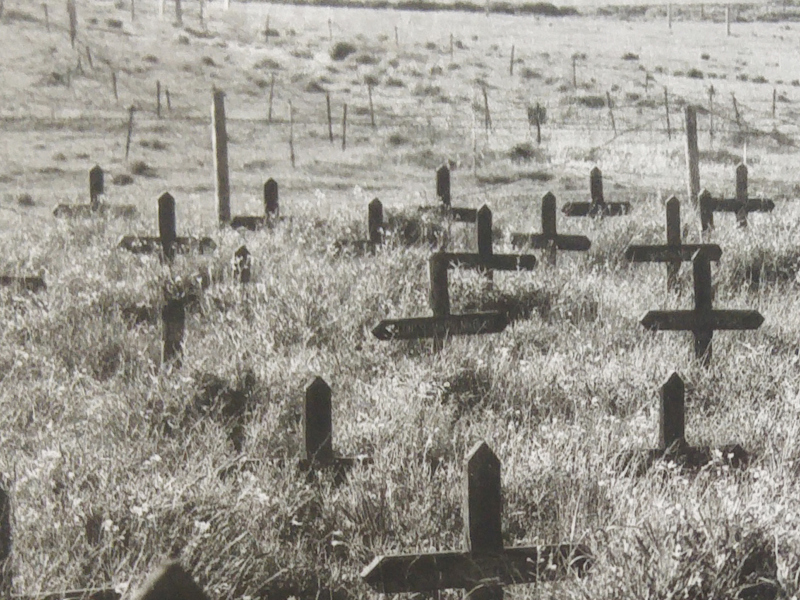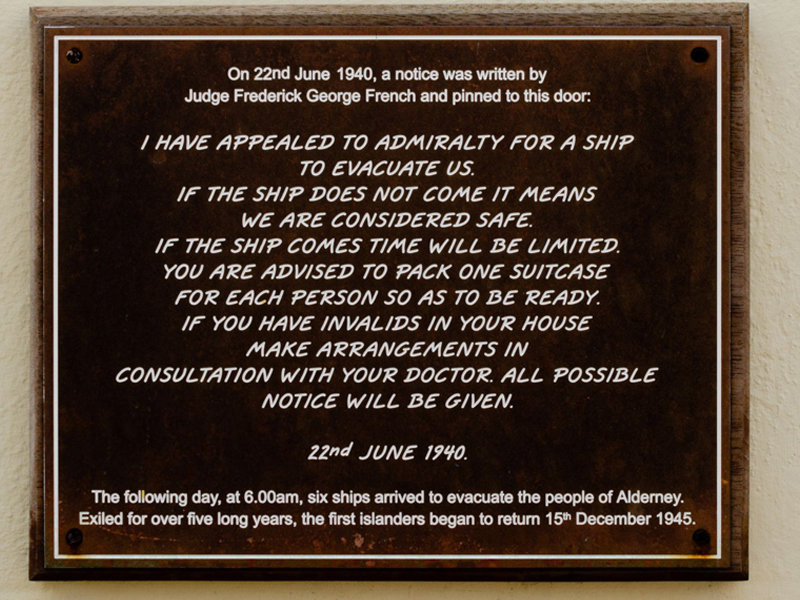Covering an extensive area of land at Platte Saline, Lager Helgoland was built by the Organisation Todt (OT) in 1942 to hold up to 1,500 inmates, including hundreds of Russian prisoners of war, Ukrainian and Polish forced labourers and Jews from occupied Europe, under extremely harsh conditions.
Successive OT camp leaders established a brutal regime of long working days, inadequate medical supervision and minimal rations. The labourers worked 12 hours a day with a short break for a watery soup at midday, seven days a week, with half a day off on one Sunday in the month. Deaths from starvation and disease were the direct result of this treatment, added to which the labourers were subjected to arbitrary beatings and summary execution.

Above: Alderney WWII Aerial Photography of Lager Helgoland from 1945 courtesy of Digimap Ltd
Working parties would leave the camp each day, whatever the weather, to undertake hard labour in the quarries, road-building, digging trenches and unloading boats at the harbour. The open area between the camp and the seashore was also used for digging sand and shingle to be used in the mixing of concrete for the fortifications.
Helgoland camp was the first of the four principal forced labour camps to be evacuated and dismantled by the Germans as early as November 1943. Today, the site has been entirely overbuilt by new housing, with only the post-war, stone-clad gateposts surviving amongst the few relics.

